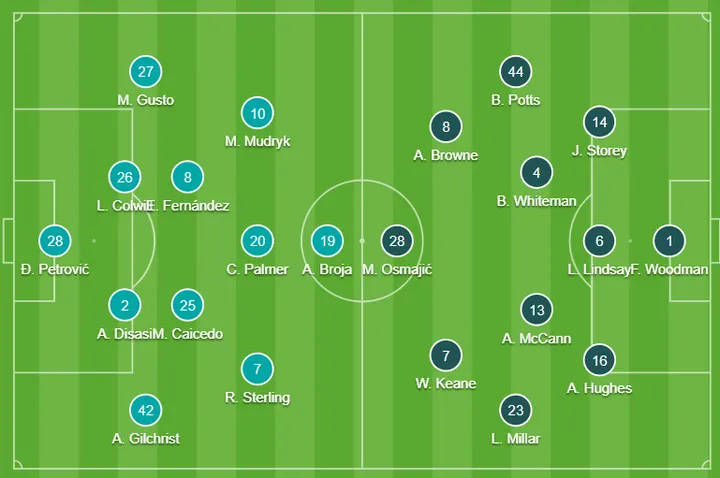
The first half was hardly convincing, the second was thoroughly, especially after the hour mark. With only 5 shots (3 on target) in the first half compared to 19 (9 on target) in the second, the team must have gotten the halftime hairdryer treatment from Pochettino in regards to their performance against another mid-table side, albeit a division lower. In fact, in 65 meetings between the clubs, only five have been in the FA Cup, while the other 60 have been split between the first and second division of English football – none have been in the Premier League since it’s rebranding in 1992.

Pochettino fielded quite a strong side, aside from his including Alfie Gilchrist at right back, which is not his typical position. The academy graduate and lifelong Chelsea fan did well, showing the same grit and determination he had done in his debuts as well as coming up through the academy – he has captained every youth team side prior to this, which certainly helps with the John Terry comparisons, not to mention JT’s own ringing endorsement of the young man. Malo Gusto also put in another fantastic performance, especially in the second half, and I will touch upon the fullback situation in more detail below.
The last of the true chances in the first half fell to Enzo Fernández, who really should have done better with his header despite seemingly getting back to his fine passing form. It is that passing that is going to be key to Pochettino’s plans, which are clearly unwavering despite being dependent on progressive fullbacks while having only one (whom he deems capable of the position) available for selection. Pochettino wants his fullbacks pancaking up and down the flanks and contributing as much to the attack as to their defensive responsibilities. There have been asymmetrical attempts of this depending on the side the ball is on, but when there are centre backs that aren’t capable of fulfilling that role because they are out of position, it has really hindered our attack. For that reason alone, Malo Gusto has seemingly shone in our recent matches. In fact, when Gilchrist (or Gusto) did press on, such as in the instance below, we certainly found it easier to break down their defensive structure and create bonafide chances.
The strategies, the passing networks, and the expectations of Pochettino are becoming a bit more clear – if they are not yet being entirely achieved. This is a possession-based side, obviously, and largely dependent on that passing ability of Enzo, who is given significantly more license to roam that Moisés Caicedo, the defensive cover. There are a rooted back two centre backs, who are expected to have decent height and aerial capabilities, complemented by two outside backs that, if the ball is on their respective side, ought to be contributing to the attack to create overloads and passing triangles. Whether against a lower-tier side or Premier League opposition, those things do not change. The midfield is slightly more variable than either the attack or defense, pending the opposition’s attacking threat. The attacking midfielders are expected to be somewhat fluid and high-pressing, and a striker offering penetrating runs that can sometimes (not the case against Preston, a compliment to Broja) be caught offside by staying high on their defensive line. We have seen time and time again that the striker’s initial run is often a decoy in hopes of opening up space for one of those attacking midfielders. In fact, it was refreshing to note that not a single player was caught offside against Preston.
While I can appreciate consistency with an adherence to a plan, it also essentially makes the team predictable. The variables inevitably become the wingers and fullbacks, and our wingers, Cole Palmer aside, are entirely predictable. Mudryk is going to knock it past and try to beat the defense with speed and Sterling is going to try to beat them with footwork. Man-marking them essentially dulls their effectiveness, and so we become dependent on the likes of Palmer to create something from his versatility or some sense of an overload on a low defensive block or offensive-minded fullbacks to outmaneuver the competition. In fact, the images above, which were our shot-generating actions in the first half, were the few times we were able to get behind their defensive line. Our passing sequences do not penetrate nearly enough, and the slow pace of our vertical ball movement complicates that matter.


